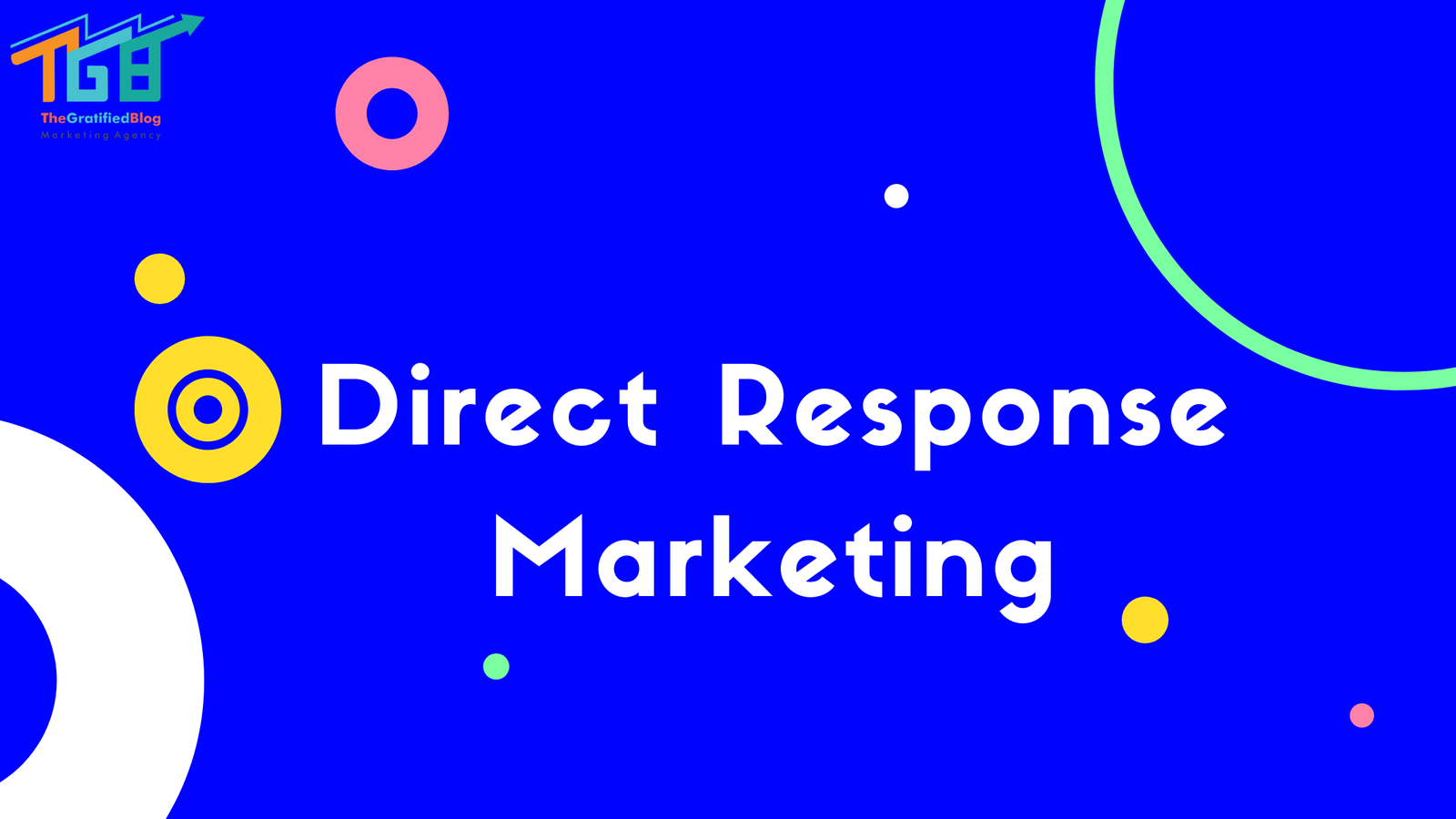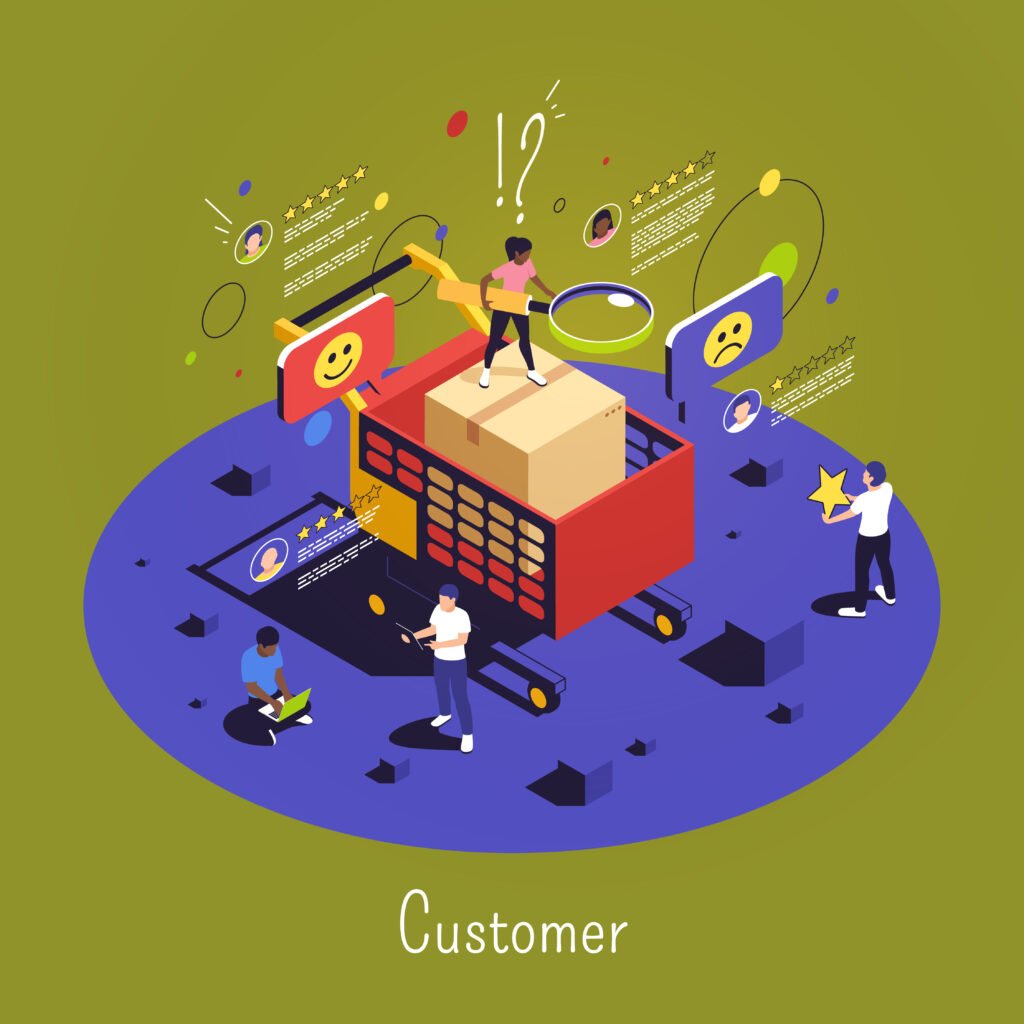
Driving traffic on a website is easy as compared to turning those visitors into potential leads. Boosting conversions to increase revenue is the primary aim of every business. So how can you do that?
As a business marketer, you can harness the potential of direct response marketing across various channels, such as television, print, radio, email, digital platforms, and social media. Establishing precise objectives for each campaign enables you to present consumers with compelling offers to persuade and engage them.
But, first let’s understand the basics, i.e.,
What Is Direct Response Marketing?

Direct response marketing is a strategy focused on encouraging immediate and measurable responses from the target audience. In short, it enables the visitors to take any action, including subscribing to a mailing list, filling out a form, making a purchase, etc.
Benefits Of Direct Response Marketing
It offers several benefits because of the quick ROI and high-volume lead generation. The benefits it provides include:
- Trackable Performance: By utilizing direct response marketing techniques, advertisers can acquire valuable insights regarding the effectiveness of their campaigns. They can track user actions such as clicks, sign-ups, form submissions, etc., allowing them to identify what marketing channels contribute the most to driving sales. Additionally, using demand-side platforms (DSPs), advertisers can determine the effectiveness of their ads, measure engagement rates, monitor click volumes, and gain other valuable data.
- Establishing a Relationship with the Targeted Audience: Direct response marketing facilitates direct communication with the audience, enabling businesses to develop and nurture long-lasting relationships. When audiences willingly provide their contact information, it indicates their interest in being contacted by the brand and receiving relevant information. This presents a chance for businesses to construct trust and engage with potential customers more likely to convert into loyal patrons.
- Measurable Outcomes: Direct response marketing allows for precise measurement of consumer responses, making it an ideal approach for testing campaigns on a smaller scale before scaling up. In digital marketing, marketers can track and analyze results in real time, comparing various metrics to evaluate and enhance the efficiency of their campaigns and formulating decisions based on data.
- Precise Segmentation: Direct response ads enable businesses to target specific segments of their potential customer base. Companies can customize their marketing messages and offers to reach the most relevant audience by creating buying lists based on consumer preferences, behavior, or interests. This precise segmentation helps maximize the chances of converting prospects into customers.
Now that you have a glimpse of direct response marketing and its benefits, you might have a question spinning around your head: which are the best marketing channels for response marketing? Don’t worry – we’ve got you covered!
Best Direct Response Marketing Channels
Here, we will discuss some of the best channels for direct response marketing and how they can do wonders for your business. So, let’s dive in.
Digital Advertising
Digital advertising encompasses various channels, including search engine marketing (SEM), display advertising, social media advertising, and video advertising. These platforms give advertisers precise and measurable tools for implementing direct response marketing strategies.
The strength of these channels lies in their ability to target specific audience segments accurately. Real-time performance metrics enable advertisers to track the effectiveness of their campaigns instantly. Empowered by this data-driven approach, they can make decisions informed by insights and optimize campaigns for optimal results.
Digital advertising channels offer a dynamic and responsive framework, allowing advertisers to fine-tune their strategies to achieve maximum engagement and impact.
Email Marketing
Email marketing is a widely embraced direct response channel, offering businesses direct communication with their audience. By deploying personalized and compelling emails, companies can promote enticing offers and disseminate pertinent content, fostering immediate actions from recipients.
The versatility of email marketing lies in its capacity for precise targeting, seamless automation, and the ability to track pivotal metrics such as open rates, click-through rates, and conversions. This strategic approach empowers businesses to forge meaningful connections with their audience, delivering content and promotions directly to their inboxes.
The effectiveness of email marketing is heightened by its ability to capture audience attention, drive engagement, and yield measurable results through systematic tracking and analysis.
Direct Mail
Despite the ascendancy of digital marketing, direct mail persists as a tangible and practical avenue for direct response marketing. Direct mail initiatives entail dispatching physical mail items, encompassing postcards, letters, or catalogs, directly to specified recipients.
Through the amalgamation of compelling copy, visually appealing design, and thoughtfully constructed offers, direct mail holds the potential to generate heightened response rates and stimulate offline engagement. In a landscape inundated with digital noise, the tactile nature of direct mail can provide a unique and memorable touchpoint for targeted audiences.
Leveraging the strengths of tangible communication, businesses can tap into the enduring effectiveness of direct mail to elicit responses and foster meaningful connections with their intended audience.
Telemarketing
Telemarketing involves direct communication with potential customers via telephone. It allows for personalized interactions, immediate response capture, and the opportunity to address customer queries or concerns directly. Telemarketing can be used for lead generation, appointment setting, sales, and customer surveys.
However, it’s essential to comply with relevant regulations and ensure the calls are made to individuals who have given prior consent or have an existing relationship with the business.
As you delve deeper into direct response marketing, you will discover many available channels. By expanding your knowledge and exploring different options, you can uncover additional channels that align with your target audience, industry, and campaign objectives.
Essential Elements Of Direct Response Marketing
As direct response marketing is related to boosting sales immediately, it must trigger immediate feedback; otherwise, it will fail. A natural response ad necessarily includes the following elements:
Irresistible Offer

An alluring offer plays a pivotal role in prompting customer action. It encompasses guarantees, trial periods, optional features, incentives, and favorable terms. The primary objective is to generate perceived value and motivate customers to purchase or engage in the desired action.
Crafting an irresistible offer is essential for capturing attention and instilling a sense of urgency or benefit. Businesses can effectively influence customer decisions and drive desired outcomes by strategically integrating these components. Understanding customer needs is pivotal, and the crucial element lies in discerning those needs and tailoring offers that resonate with their preferences, fostering a positive response and promoting customer loyalty.
Call-to-Action (CTA)

The Call-to-Action (CTA) is pivotal in direct response marketing, guiding the audience on the desired action. Clarity, accessibility, and persuasion are paramount aspects of a successful CTA. Whether presented through buttons, links, or explicit instructions, the CTA should be compelling, encouraging customers to delve deeper into engagement.
Actions prompted by a CTA can range from signing up and purchasing to sharing the offer with others. Effectively crafted CTAs facilitate user interaction and contribute to the overall success of a direct response campaign, prompting a seamless transition from interest to action.
Customer-Centric Approach

Direct response marketing goes beyond simply promoting products or services; it addresses customer problems and fulfills their needs. Marketers can build trust and establish a more robust connection by understanding customers’ pain points and aligning the marketing message to resonate with their concerns.
This customer-centric approach generates better outcomes and contributes to increasing brand awareness. By putting the customer at the center of marketing efforts, businesses can create a positive brand perception, foster loyalty, and encourage customers to take action.
Urgency

Instilling a sense of urgency is a potent strategy within direct response marketing. Using scarcity, time constraints, or competitive elements empowers marketers to evoke urgency, motivating customers to take prompt action.
Achieving immediacy can be executed by implementing time-sensitive offers and exclusive opportunities, enticing discounts, or highlighting the limited availability of products or services. This tactic captivates the audience’s attention and propels them towards swift decision-making, aligning their actions with the urgency conveyed in the marketing message.
The strategic integration of urgency in campaigns enhances customer responsiveness, fostering a dynamic and compelling environment that spurs rapid engagement.
Also Read: Which Bidding Option Is Best Suited For An Advertiser Focused On Direct Response Marketing Goals
Final Words
Direct response marketing remains a valuable and effective strategy for advertisers. By implementing the right strategies and adhering to the best practices discussed earlier, you can generate sales and maximize your business’s return on investment (ROI).
If you need help understanding any topic, then please feel free to contact us. We are here to provide assistance and support, and we would be delighted to help you.
Thanks for reading 🙂








No Comments